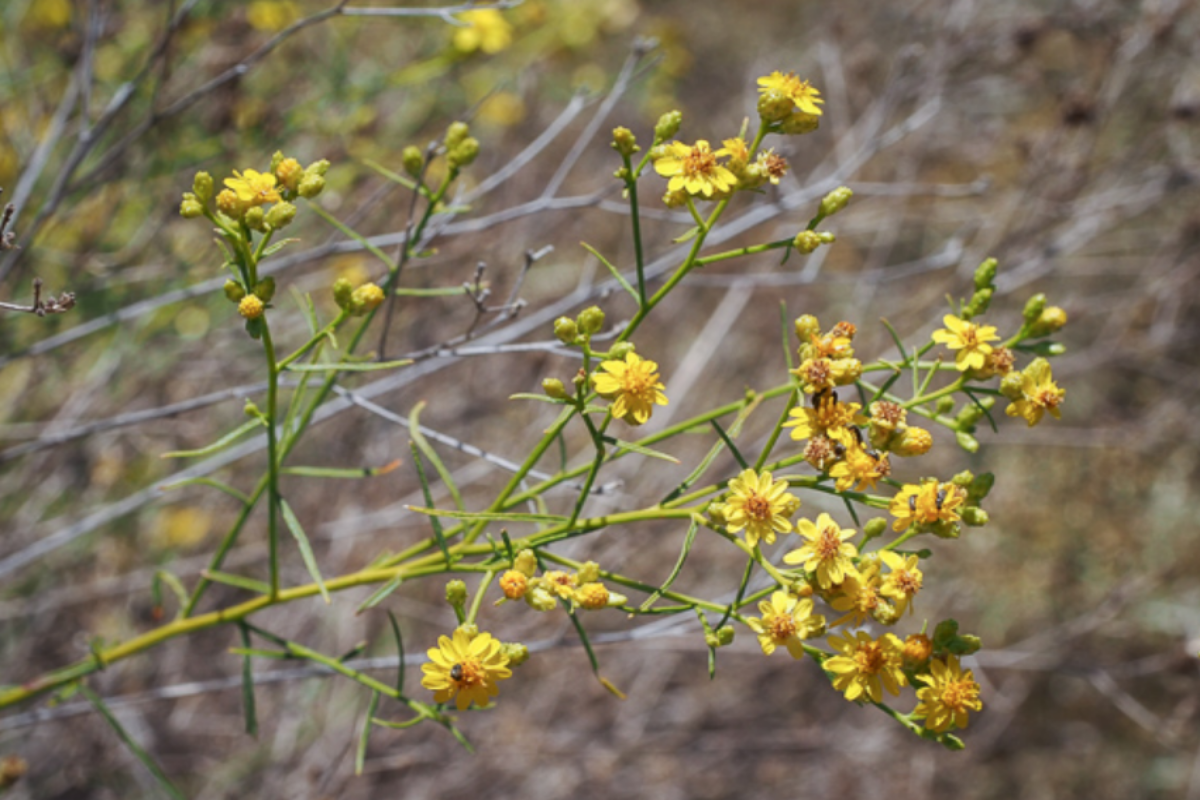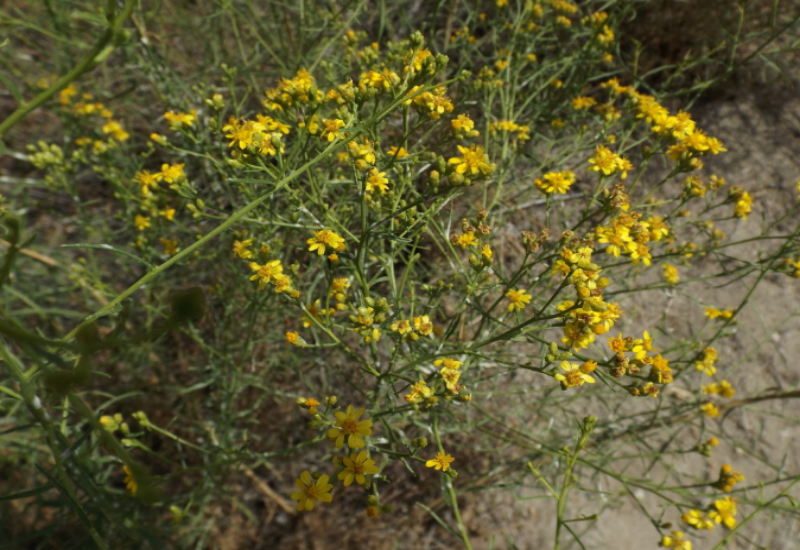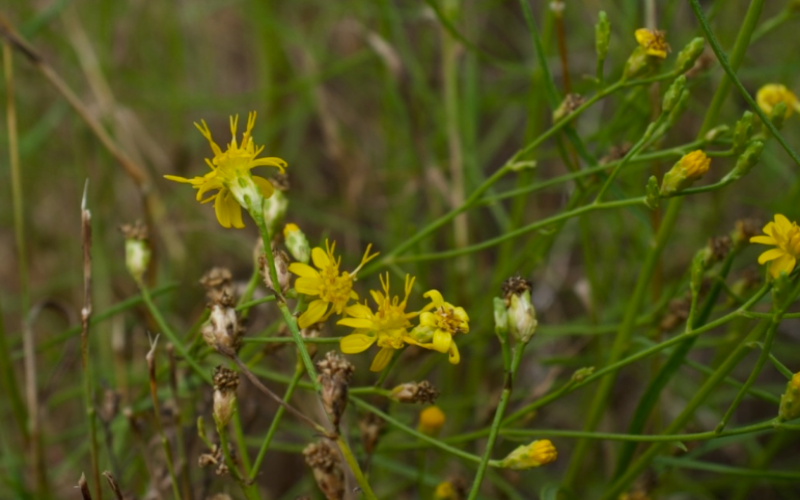Gutierrezia californica is a small, flowering subshrub that grows 20 inches tall. The fast-growing plant reproduces by seeds.

It is easily identified by its clumpy growth, needle-like leaves, and clusters of yellow disc florets with protruding styles.
Matchweed Classification
- Domain: Eukaryota
- Kingdom: Plantae
- Phylum: Tracheophyta
- Subphylum: Angiospermae
- Class: Dicotyledonae
- Order: Asterales
- Family: Asteraceae
- Genus: Gutierrezia
- Species: Gutierrezia californica
- Common Names: California Matchweed and San Joaquin Snakeweed
Nativity and Distribution
Matchweed is native to California and Arizona in the United States and Baja California in Mexico.
Physical Characteristics

- Leaves: Small, linear, glabrous or minutely scabrous, needle-like leaves
- Fruits: 1-2.8 mm, cone-shaped, dry, cypsela
- Stems: Erect with gray or red hues
- Flowers: 1-3 small flowerheads with yellow ray florets
- Roots: Tap root system
Matchweed is a small subshrub that grows about half a meter or 20 inches tall. It is part of the North American flowering plants in the Asteraceae family.
You can easily identify it by its clumpy growth, needle-like leaves, and clusters of yellow disc florets with protruding styles.
The leaves are small, alternate, bright green leaves and grow more linear when ascending, up to about 0.5-1 mm wide. They are glabrous or minutely scabrous, gland-dotted (small glands that appear as dots) with smooth or slightly serrated margins.
Stems are generally erect, glabrous, or minutely hairy, with gray or red hues, and low-growing to about 20 inches. They grow close to each other, exhibiting a clumpy growth.
Frogfruit produces small clusters of 1-3 flowerheads, containing numerous yellow ray florets and protruding styles at the end of each branch on the stem. Flowering occurs between April and November.
The fruit is dry, cone-shaped, cypsela 1-2.8 mm wide.
Reproduction, Dispersal, and Life Cycle
- Life Cycle: Perennial
- Seeds: A single plant produces thousands of seeds
- Climate: Arid and semi-arid climates
- Dispersal: Wind
Gutierrezia californica behaves as a perennial flowering plant, thriving in arid and semi-arid habitats in the Transverse Range, the Peninsular Range, and the Coast Ranges.
It produces thousands of seeds that are mainly dispersed near the parent plant. Since the seeds have a tuft of hair, it is also dispersed by wind over longer distances.
The plant grows in a mat formation, colonizing large patches of land. You’ll typically find matchweed on slopes and plains with rocky or sandy, fast-draining soil and in full sun.
Similar Plants
- Gutierrezia sarothrae
- Gutierrezia microcephala
- Gutierrezia arizonica
Uses

- G. californica is a popular ground cover alternative to lawn grass where landscapers are focused on water conservation.
- Native plant growers propagate it as a pollinator plant to attract bees and butterflies, contributing to the native biodiversity.
- It is grown in drought-tolerant gardens for its attractive flowers.
- It is used in soil stabilization, erosion control, and land reclamation efforts.
Impact on Farms and Environment
Due to its specific growing conditions, Gutierrezia californica is typically not found in farms. However, when grown in ornamental gardens, it may escape to unwanted areas.
Additionally, its clumpy growth can undermine the aesthetics of a landscape, especially when the plants turn brown.
Matchweed is also a common weed of grasslands, chaparral, roadsides, and other disturbed areas.
Control
- Mechanical control: Pull out the plants when young to prevent further spread
- Chemical control: Apply a herbicide such as glyphosate for effective control
Gutierrezia californica is hardy, but pulling can be a viable option for young plants and small infestations.
For larger and more mature plants, repeated treatments of glyphosate can provide effective control.

Lead Editor for Insight Weeds.